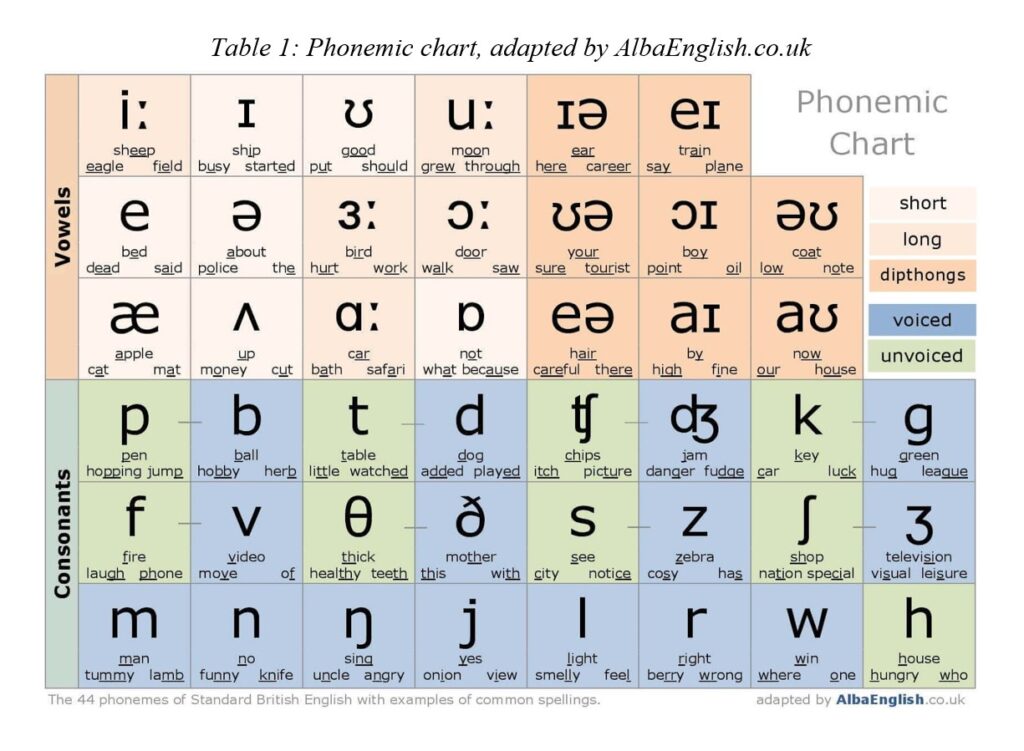PHONETICS AND PHONOLOGY
Segmental Aspects
List of abbreviations:
cf (confer) – compare
e.g. (exempli gratia) – for example
ELT – English Language Teaching
GA – General American
GB – General British
i.e. (id est) – it means
IPA – International Phonetic Alphabet/ International Phonetic Association
MLE – Multicultural London English
PI – Phonemic Inventory
PIE – Proto-Indo-European
PSP – Public School Pronunciation
RP – Received Pronunciation
SE – Standard English
UK – United Kingdom
List of figures:
Figure 1: Speech chain, ROACH, P. 2009. English Phonetics and Phonology. Cambridge University Press, 2009, p. 185
Figure 2: The International Phonetic Alphabet – transcription symbols, JONES, D. 2003. Cambridge English Pronouncing Dictionary. Cambridge University Press, 2003, p. xx
Figure 3: Organs of speech, GIMSON, A.C. 1970. An Introduction to the Pronunciation of English. England: Edward Arnold, 1970, p. 8
Figure 4: Regional Accents of the UK. https://www.universitytranscriptions.co.uk/top-10-difficult-uk-regional-accents-for-transcription/
Figure 5: British and American vowels, JONES, D. 2003. Cambridge English Pronouncing Dictionary. Cambridge University Press, 2003, p. 583
Figure 6: English distinctive vowels, PAVLÍK, R. 2000. Phonetics and Phonology of English. Bratislava: PdFUK, 2000, p. 66
Figure 7: Slovak distinctive vowels, KRÁĽ, Á. – SABOL, J. 1989. Fonetika a fonológia. Bratislava: SPN, 1989, p. 126
Figure 8: The cardinal vowels, HANDKE, J. 2013. The Virtual Linguistics Campus. ActiveBoard by Promethean, 2013
Figure 9: Primary and secondary cardinal vowels, ROACH, P. 1996. English Phonetics and Phonology. Cambridge University Press, 1996, p. 13
Figure 10: British English diphthongs, CRYSTAL, D. 2011. The Cambridge Encyclopedia of the English Language. New York: Cambridge University Press, 2011, p. 241
Figure 11: American English diphthongs – https://www.researchgate.net/figure/American-English-vowels-and-diphthongs-29_fig3_339016220
Figure 12: Slovak diphthongs, PAVLÍK, R. 2000. Phonetics and Phonology of English. Bratislava: PdF UK, 2000, p. 258
Figure 13: English consonants, www.languagebasecamp.com
Figure 14: https://sandiegovoiceandaccent.com/videos/how-to-pronounce-the-l-sound-light-l-vs-dark-l
Figure 15: Kiki and bouba experiment, RAMACHANDRAN, V. S., HUBBARD, E. M. 2001. Synaesthesia – A Window into Perception, Thought and Language. In: Journal of Consciousness Studies, 8.12, 2001, pp. 3 – 34
Figure 16: Symbolic Scales, NEWMAN, S. S. 1933. Further Experiments in Phonetic Symbolism. In: The American Journal of Psychology, 45.1.1933, pp. 53 – 75
Figure 17: Spectrogram presenting vowel formants, LADEFOGED, P. 2000. Vowels and Consonants: An Introduction to the Sounds of Languages. Oxford: Blackwell Publishers Inc., 2000, p. 37)
Figure 18: Oscillogram and spectrogram as compared in the article: https://www.researchgate.net/publication/265939965_DO_FRENCH-SPEAKING_LEARNERS_SIMPLY_OMIT_THE_ENGLISH_h
List of tables:
Table 1: Phonemic chart, adapted by AlbaEnglish.co.uk
Table 2: The chart of English consonant phonemes, ROACH, P. 1996. English Phonetics and Phonology. Cambridge University Press, 1996, p. 62
Table 3: The chart of Slovak consonant phonemes – adapted by the author according to SIČÁKOVÁ, Ľ. 2002. Fonetika a fonológia pre elementaristov. Prešov: Náuka, 2002, p. 50
Table 4: Average formant frequencies of English vowels pronounced by an adult male, WELLS, J. C. 1962. A Study of the Formants of the Pure Vowels of British English. University of London, U.K., available at http://www.phon.ucl.ac.uk/home/wells/formants/index. Html
Table 5: Average formant frequencies of Slovak vowels, KRÁĽ, Á. – SABOL, J. 1989. Fonetika a fonológia. Bratislava: SPN, 1989, pp. 204 – 209
Table 6: Face-to-face communication, PAVLÍK, R. 2000. Phonetics and Phonology of English. Bratislava: PdFUK, 2000, p. 13


